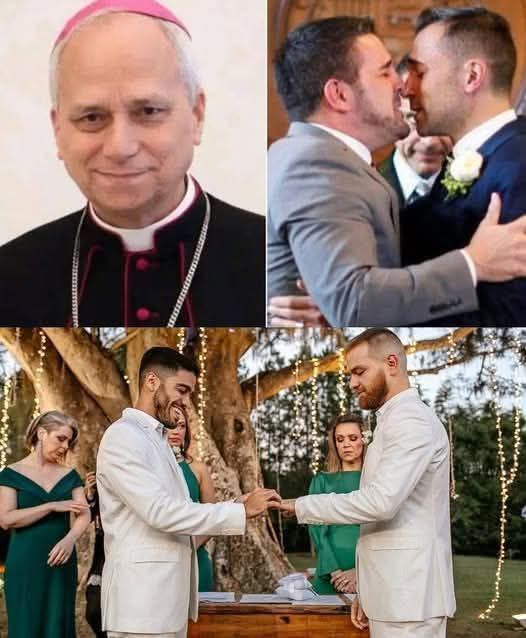In an age dominated by headlines, hashtags, and soundbites, it’s rare for a single word to ignite global curiosity. But that’s precisely what happened after newly-elected Pope Leo XIV responded to a question with a lone, ambiguous word — “Many.” For some, it was a statement of depth. For others, a cryptic gesture. And for many more, a prompt to speculate, interpret, and even debate.
This article takes a balanced look at the event, the interpretations it inspired, and what it tells us about communication, context, and the modern media landscape.
Setting the Scene: A Papal Moment Goes Viral
On May 12, 2025, Pope Leo XIV, formerly Cardinal Robert Prevost of Chicago, stood before an international press corps at the Vatican following his historic election. As the first American to ascend to the papacy, expectations were high. Reporters were eager to ask about his background, his vision for the Church, and, of course, his thoughts on his home country.
When asked by a journalist, “Do you have a message for the United States?”, the Pope paused and answered with a single word:
“Many.”
He then concluded with a brief, “God bless you all,” and exited the podium.
The moment was short — less than a few seconds — but it instantly became a trending topic on social media and a subject of discussion across news outlets, blogs, and forums. What did he mean? Was it a coded message, a slip of the tongue, or simply a humble acknowledgment?
Understanding the Word: Possible Interpretations
The ambiguity of the Pope’s one-word message has given rise to countless interpretations. Let’s explore a few of the most prominent theories.
1. A Broad Blessing
The most charitable interpretation is that Pope Leo XIV simply intended to say that he had “many” blessings, prayers, or hopes for the people of the United States — a country he once called home. In this reading, “many” is not incomplete, but rather poetic in its brevity. Like a haiku, it invites reflection rather than clarity.
This would not be out of character for a religious leader. Papal communications often lean on metaphor, tradition, and spiritual suggestion rather than direct language. It’s possible Leo XIV hoped to communicate abundance, compassion, or simply goodwill — all wrapped in a single, enigmatic term.
2. An Incomplete Sentence
Others have suggested the Pope may have started a sentence but chose not to finish it. “Many…” could be followed by a mental list — “Many challenges,” “Many prayers,” “Many opportunities,” “Many hopes.” Perhaps he decided to leave the interpretation open on purpose. Or maybe he had a moment of hesitation, and the moment passed.
Given the setting and pressure of a live international address, even seasoned public figures can make spontaneous choices in speech. Sometimes, less is more — even if unintentionally so.
3. A Reflection of Complexity
A third school of thought views “many” as a recognition of the complexity of America itself. It’s a nation of many voices, many beliefs, many contradictions. From this perspective, the word “many” is a kind of mirror, reflecting not a singular message but a diverse and layered national identity.
In this sense, Pope Leo XIV’s word may have carried more meaning than even he anticipated. It resonates with theological concepts of unity in diversity — a central theme in Catholicism — and invites listeners to think beyond surface-level interpretations.
The Public Reaction: From Confusion to Commentary
Social media was quick to react. Memes spread rapidly, and some users jokingly referred to “Many” as the shortest papal encyclical in history. Others treated it with solemnity, dissecting every possible theological or political implication.
Some conservative commentators speculated that it was a veiled criticism of American culture or politics. Progressive voices, on the other hand, suggested it was a gentle push for inclusion and openness. Many religious observers simply found the moment intriguing, rather than prescriptive.
Despite the buzz, the Vatican has not issued any official clarification, nor has the Pope addressed the word further in any public speech. This silence has only fueled continued curiosity.
Historical Parallels: When Few Words Say Much
While Pope Leo XIV’s “Many” may seem unprecedented, it fits within a broader tradition of minimalist communication by global leaders.
In 1963, Pope John XXIII famously responded to a child who asked what message he would give the world. He answered: “Peace.”
President Calvin Coolidge was known for saying little; when asked why he was so quiet, he simply said, “Because.”
In literature, Hemingway was once challenged to write a story in six words. He wrote: “For sale: baby shoes, never worn.”
In each case, brevity sparked emotion and analysis — proof that communication isn’t always about the quantity of words, but the space they leave behind.
Media and Meaning in the 21st Century
The Pope’s statement is also a case study in how we, as a global audience, engage with meaning. We often expect quick answers, direct responses, and clarity — especially from public figures. But ambiguity can be powerful.
The fact that “Many” became newsworthy says as much about our hunger for meaning as it does about the Pope himself. It highlights how language, context, and perception intersect in a digital-first age. In some ways, it’s a reflection of our own uncertainties: when leaders are vague, we often fill in the blanks with our own hopes, fears, and interpretations.
Conclusion: A Message Meant to Be Interpreted?
Whether Pope Leo XIV’s one-word reply was a deliberate act of poetic simplicity or just an impromptu moment, it clearly struck a chord.
For some, it was deeply meaningful.
For others, it was puzzling or even frustrating.
For all, it was a reminder that meaning can come from minimalism.
In a time where every phrase is scrutinized and debated, perhaps the most powerful messages are the ones that leave space for reflection.
Maybe, in the end, that was the point all along.
 Fact Stream Daily
Fact Stream Daily



